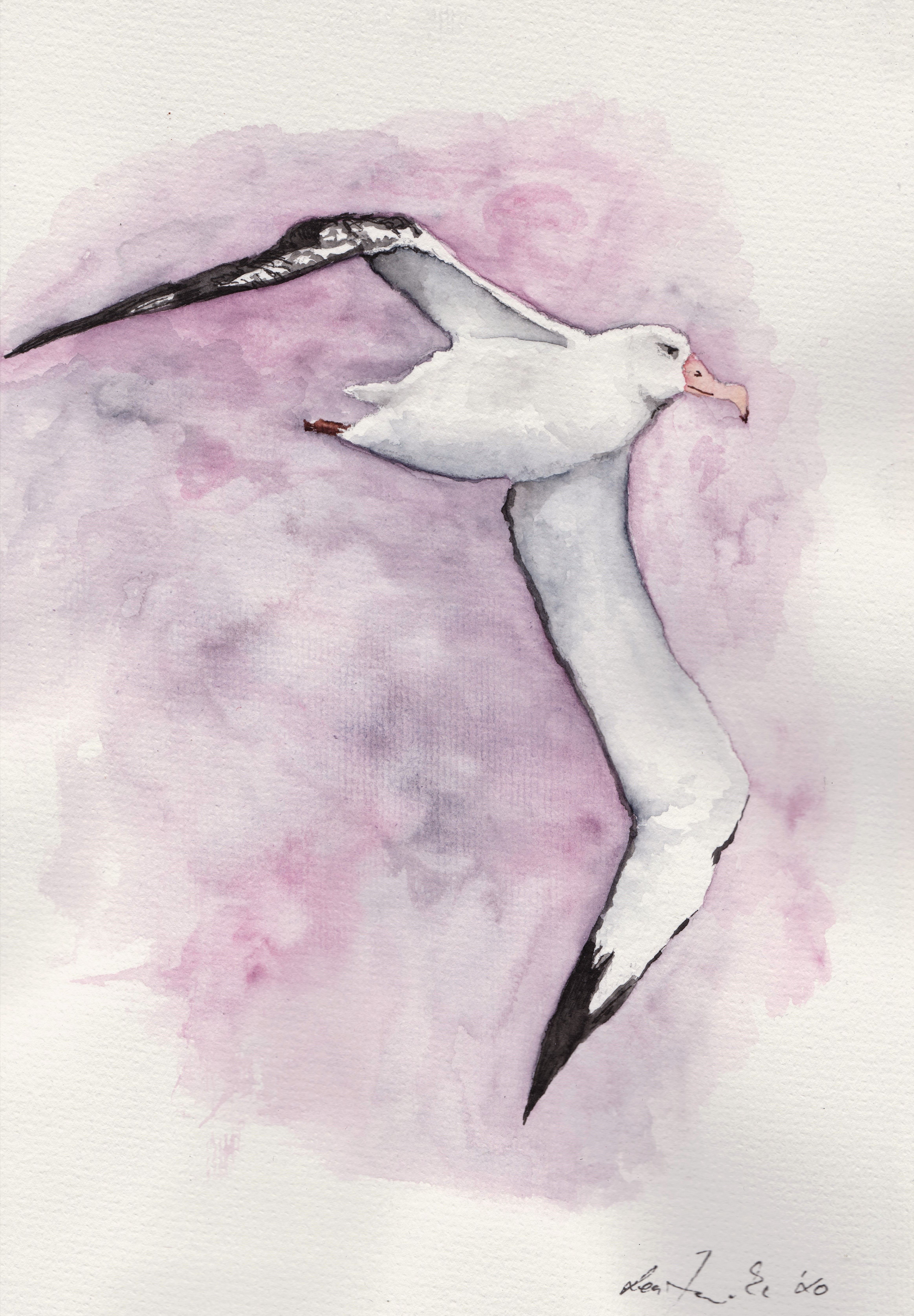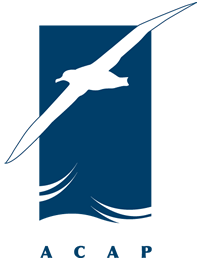 Wandering Albatross at sea by Lea Finke of Artists & Biologists Unite for Nature (ABUN) for World Albatross Day 2020, after a photograph by Kirk Zufelt
Wandering Albatross at sea by Lea Finke of Artists & Biologists Unite for Nature (ABUN) for World Albatross Day 2020, after a photograph by Kirk Zufelt
Aline da Silva Cerqueira (Department of Geography, King's College London, UK) and colleagues have published open access in the journal Ecological Informatics on using bird-borne audio recordings to reveal seabird behaviour and environmental context at sea. The acoustic datasets used in the study were collected from five Black-browed albatrosses Thalassarche melanophris and five Wandering Albatrosses Diomedea exulans during the brood-guard period.
The paper’s abstract follows:
“Advancements in acoustic data collection technologies have greatly increased their use in wildlife monitoring, but produce large volumes of data that are challenging to analyse manually. Recent developments in machine learning, particularly convolutional neural networks (CNNs), have transformed audio data analysis, enabling efficient and accurate sound classification. This study aimed to develop a method for automatic classification of behaviour (on-water activity, flight, vocalisation and preening) from sounds recorded by free-ranging albatrosses of two species equipped with audio recorders during foraging trips at sea. Using a manually labelled seabird audio dataset, a general-purpose CNN model was created and trained in Google Colab. The model development followed a structured workflow, including audio data preparation, pre-processing, model architecture and training, and performance evaluation. The model achieved a global accuracy and precision of 95 % during testing. Despite high overall accuracy, performance varied across sound categories due to the inherent complexity of distinguishing behaviours, leading to differences in prediction errors. This study primarily focused on developing and validating an accessible, high-performance workflow for automated acoustic classification, with the goal of enabling future ecological and conservation applications. It demonstrated that a generic web-based CNN model can effectively classify seabird sounds into different behaviours with high accuracy. The approach provides a foundation for future ecological and conservation applications, enabling detailed exploration of activities, interactions and environmental context of seabird behaviour using acoustic data. By leveraging open-source platforms and accessible tools, this work provides a foundation for future advancements in automated acoustic monitoring, making it accessible to a diverse range of researchers.”
With thanks to Richard Phillips.
Reference:
Cerqueira, A.daS., Freeman, R., Phillips. R.A. & Dawson, T.P. 2025. Automated classification of albatross acoustic behaviour at sea: a free and open-source classifier for seabird sounds. Ecological Informatics doi.org/10.1016/j.ecoinf.2025.103474.
John Cooper, Emeritus Information Officer, Agreement on the Conservation of Albatrosses and Petrels, 28 October 2025

 English
English  Français
Français  Español
Español